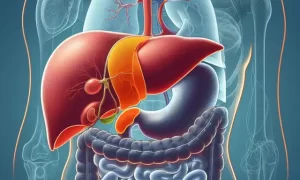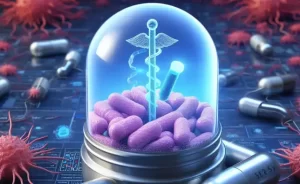TACA targeted therapy progress: CAR-T and double antibodies
- Normal Liver Cells Found to Promote Cancer Metastasis to the Liver
- Nearly 80% Complete Remission: Breakthrough in ADC Anti-Tumor Treatment
- Vaccination Against Common Diseases May Prevent Dementia!
- New Alzheimer’s Disease (AD) Diagnosis and Staging Criteria
- Breakthrough in Alzheimer’s Disease: New Nasal Spray Halts Cognitive Decline by Targeting Toxic Protein
- Can the Tap Water at the Paris Olympics be Drunk Directly?
TACA targeted therapy progress: CAR-T and double antibodies
- Should China be held legally responsible for the US’s $18 trillion COVID losses?
- CT Radiation Exposure Linked to Blood Cancer in Children and Adolescents
- Can people with high blood pressure eat peanuts?
- What is the difference between dopamine and dobutamine?
- What is the difference between Atorvastatin and Rosuvastatin?
- How long can the patient live after heart stent surgery?
TACA targeted therapy progress: CAR-T and double antibodies. Tumor-associated carbone antigens (TACAs) are an attractive class of anti-tumor immunotherapy antigens, which are overexpressed in tumor cells.
Two important TACAs: ganglioside (GD2) and glycoprotein mucin 1 (MUC1) are currently the hotspots of tumor immunotherapy research.
Currently, three GD2 antibody drugs have been approved worldwide. In March 2015, Unituxin (dinutuximab) was approved by the FDA for the first-line treatment of children with high-risk neuroblastoma.
In May 2017, the second GD2 antibody, dinutuximab beta, was approved by EMA for the treatment of patients with high-risk neuroblastoma aged 12 months and over, under the trade name Qarziba. BeiGene introduced Qarziba (Dituximab) from EUSA Pharma.
On September 29, 2020, this drug’s marketing application is planned to be included in the priority review.
On November 25, 2020, the third monoclonal antibody Naxitamab targeting GD2 was approved for the treatment of neuroblastoma.
In addition to monoclonal antibodies, chimeric antigen receptor (CAR) T cells and bispecific antibodies (BsAb) are two other promising development directions for the treatment of cancer. In recent years, CAR-targeted GD2 and MUC1 have been developed. The research of T cells and BsAb has also made remarkable progress.
01. GD2 and MUC1
Ganglioside GD2 is a glycolipid antigen containing N-acetylneuraminic acid, composed of 5 monosaccharides, anchored on the lipid bilayer of the plasma membrane through ceramide lipids.

The expression level of GD2 in normal tissues is low, but in various types of cancers such as neuroblastoma, small cell lung cancer, melanoma, glioma, and sarcoma, the expression of this weakly immunogenic antigen can reach per cell 107 molecules.
In addition, GD2 has been found to be a potential biomarker for breast cancer stem cells. GD2 can induce tyrosine phosphorylation and activate a variety of kinase pathways, leading to enhanced cancer cell proliferation, migration and invasion.
MUC1 is a high-molecular-weight glycoprotein expressed on the epithelial cell layer of lung, breast, pancreas, kidney, ovary, colon and other tissues to protect these cells exposed to the external environment. MUC1 is composed of two subunits, MUC1-N and MUC1-C, which form a stable non-covalent complex on the cell surface.

MUC1-N contains a variable number of 20 amino acid tandem repeats (VNTR), which are highly glycosylated on the serine or threonine residues of each VNTR in normal cells. However, on cancer cells, due to changes in the expression of glycosyltransferases, tumor-associated MUC1 is predominantly modified by short glycans, including Thomsen nouveau (Tn), sialic acid Tn (STn), Thomsen Friedenreich (Tf), and sialic acid T ( STf). Under glycosylation, MUC1 can expose hidden epitopes in the extracellular region, allowing antibodies to selectively bind to tumors.
02. TACA targeting CAR-T
GD2-CAR-T
Adoptive transfer of CAR-T cells is a promising immunotherapy strategy that can treat cancer independently of MHC. Due to the high expression and importance of GD2 in solid tumors, especially neuroblastoma, anti-GD2-CAR-T cell immunotherapy has been widely used in neuroblastoma clinical research. The table below lists GD2 in the past 5 years. -CAR-T clinical trials:

In order to further maintain the survival of GD2-CAR T cells, additional stimulating molecules such as interleukin-15 (IL15) are incorporated into the CAR structure. GD2-CAR.15 T cells containing IL-15 are more effective in controlling tumor growth, the total number of infused T cells is smaller, and the survival rate is improved after the re-challenge experiment. Further clinical trials of GD2 CAR.15 T cells (NCT03294954) are underway.
In order to improve the safety of CAR-T cell therapy, one method is to establish inducible suicide genes. The inducible cysteine protease 9 (iCasp9) suicide gene was integrated into the CAR of GD2-CAR-T cells. iCasp9 is not toxic at the basic expression level. Small molecule dimer drugs induce cells to express iCasp9, leading to rapid apoptosis of transduced cells. Activated cells expressing CAR are preferentially killed, providing a safety switch.
MUC1-CAR-T
At present, the development of MUC1 on the market mainly includes these categories: antibody therapy, ADC drugs, coupled radiotherapy drugs, CAR-T direction and vaccines. There are 6 CAR-T cell research registered in clinicaltrials, all of which are in China.
03. TACA targeting double antibody
GD2 targeting double antibody
The most common TACA-based double antibody is a T cell-directed double antibody linked to the CD3 antibody. A BSAb is a humanized mouse anti-CD3 single chain antibody linked to the carboxyl end of an anti-GD2 light chain antibody (hu3F8).

hu3F8-BsAb has a strong inhibitory effect on GD2+ tumors, and its selectivity is more than 100,000 times that of normal tissues. hu3F8-BsAb effectively inhibits tumor growth in humanized mouse models and has high safety. Mechanism studies have shown that in addition to T cells, monocytes also play an important role in maintaining the infiltration, survival or proliferation of T cells into the tumor stroma, and also play an important role in the special anti-tumor effect of hu3F8-BsAb.
Through the tandem fusion of the hu3F8 single-chain antibody fragment and the anti-CD3 antibody HuOKT3 single-chain antibody, a non-IgG-like anti-GD2 BsAb is formed.

hu3F8-scBA has a significant inhibitory effect on the tumor growth of human neuroblastoma/melanoma xenograft DKO mice. One disadvantage of Hu3F8 single-chain antibody is its low thermal stability, which needs further clinical application verification.
BsAb can also be used in combination therapy to improve efficacy. A GD2 BsAb, called Surek, targets GD2 and CD3. Cytotoxic T-lymphocyte-associated protein 4 (CTLA-4) is an immune checkpoint protein, combined with anti-CTLA-4 monoclonal antibody, Surek and anti-CTLA-4 monoclonal antibody combined to make B78-D14 melanoma mice The overall survival rate increased to 90%, while only 20% of the anti-CTLA-4 mAb group survived, and 60% of the Surek group survived.
MUC1 targeting double antibody
Compared with BsAb based on GD2, there are fewer studies on BsAb based on MUC1. Two BsAbs, namely MUC1×CD3 and MUC1×CD28, have been studied in preclinical studies. These two BsAbs can show obvious cytotoxicity to tumor cells in the presence of IL-12 activated killer cells. In mouse tumor models, MUC1×CD3-BsAb can significantly slow down the growth of human cholangiocarcinoma cells TFK-1.
In addition to T cells, natural killer cells (NK cells) are another powerful effector cell. The anti-MUC1 single domain antibody and the anti-CD16 antibody were connected to design a new type of non-IgG-like BsAb. The BSAb can recruit NK cells to effectively kill tumor cells expressing MUC1. In the mouse xenograft tumor model, BsAb has a significant inhibitory effect on the growth of human colon cancer LS174.
Summary
Due to the overexpression of TACAs on a variety of cancer cells, it has become an important target for the development of immunotherapy. Anti-TACA-CAR-T cells and BsAb are important directions of TACA immunotherapy. At present, a variety of CAR-T and BsAb targeting TACA have entered the clinical stage, showing strong therapeutic potential.
A key factor for the success of immunotherapy is to minimize potential toxicity and side effects. New research on TACA focuses on discovering the unique characteristics of TACA structure in solid tumor tissues. For example, the expression of 9-O-acetylated GD2 ganglioside is limited to Tumor tissue, but not found in normal tissue.
In addition, compared with normal cells, tumors often contain more N-glycolylneuraminic acid. These rarer structures may provide more specific targets for anti-tumor immunotherapy to improve the safety of treatment.
(source:internet, reference only)
Disclaimer of medicaltrend.org
Important Note: The information provided is for informational purposes only and should not be considered as medical advice.



